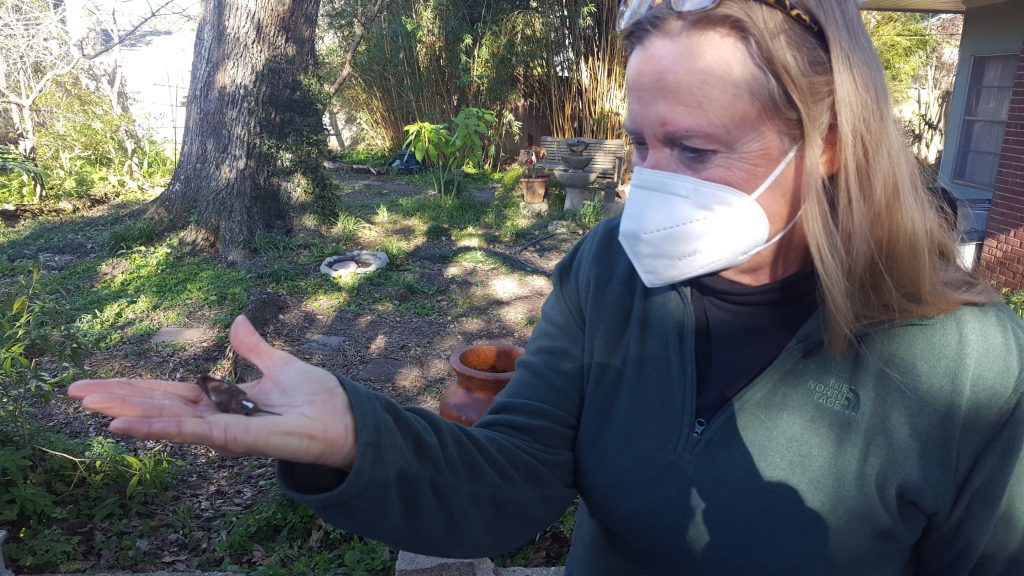| GoMAMN Newsletter: Issue 8 |
| Greetings from the GoMAMN Coordination Committee! This is the eighth issue of the GoMAMN newsletter, which is distributed on a quarterly basis (more or less!). The purpose of this newsletter is to share information about the Network and ongoing monitoring projects, along with news and opportunities relevant to our work as we collectively strive to advance bird conservation along the Gulf of Mexico. |
GoMAMN Community of Practice Meeting, October 5-7, 2021!!
| Join us for a virtual gathering of Gulf of Mexico avian research, management and monitoring practitioners on October 5 – 7, 2021. The meeting objectives include sharing GoMAMN’s latest information products (Strategic Bird Monitoring Guidelines for the Gulf of Mexico, gap analysis and inventory of Gulf bird monitoring programs), networking, and plotting a course for GoMAMN over the next several years. |
| Meeting program will include both “all-hands” topics as well as guild-specific breakouts. For more information and registration information, click here. |
| Team Member Spotlight: Mary Ann Ottinger |
 Mary Ann is an Emeritus and Research Professor at the University of Houston, focusing on Behavioral Neuroendocrinology, Development/Aging, and Ecotoxicology Mary Ann is an Emeritus and Research Professor at the University of Houston, focusing on Behavioral Neuroendocrinology, Development/Aging, and EcotoxicologyIn this interview, Mary Ann will provide insights on her background, field of study, her involvement with GoMAMN, and her vision for GoMAMN going forward. Read the full interview here |
 |
| Mottled Duck (Anas fulvigula) breeding pair. Photo credit: R. Finger |
| Monitoring Project Highlight: Western Gulf Coast Mottled Duck Breeding Population Survey By William (Bill) Vermillion, and Steve DeMaso The Mottled Duck (Anas fulvigula) is a year-round resident in Gulf of Mexico coastal marshes and associated habitats, and a priority for conservation planning and habitat delivery for the Gulf Coast Joint Venture (GCJV) partnership. A significant portion of the species’ population occurs within the GCJV boundary, and it is an important component of regional waterfowl harvest. Concerns have arisen regarding the species’ status in the GCJV region, where habitat loss and degradation are believed to be limiting suitable nesting and brood-rearing habitat. In 2003, the GCJV partnership formed a Mottled Duck Working Group to provide conservation guidance, and the Working Group concluded that increased management to reduce regional declines was needed, as well as improved monitoring to better track population trends. To improve Mottled Duck monitoring in Texas and Louisiana, staff from the Texas Parks and Wildlife Department, the Louisiana Department of Wildlife and Fisheries, and the U.S. Fish and Wildlife Service, Division of Migratory Bird Monitoring, and the GCJV developed the Western Gulf Coast Mottled Duck Breeding Population Survey. The survey’s primary objectives are to provide an annual estimate of the breeding Mottled Duck population along the western Gulf Coast, determine the population trend over time, and to provide a standardized protocol for estimating Mottled Duck abundance in Texas and Louisiana. Read more here |
| Paper Highlight: “Toward a global strategy for seabird tracking” by A. Bernard, A.S.L. Rodrigues, V. Cazalis, and D. Gremillet |
 |
| Magnificent Frigatebird (Fregata magnificens). GoMAMN photo gallery. |
| Key Takeaway Points: The authors identified and mined 689 seabird tracking studies from the last four decades. Substantial knowledge gaps were found, with existing studies biased towards heavier, oceanic species from high-latitude regions. Conservation status had little influence on which species were tracked. Much of the existing data was not readily available to other researchers or to conservation decision-makers. The authors make recommendations for future study priorities and data sharing. Read the full article here |
| Feature: COVID-19 Pandemic Impacting Gulf Coast Bird Monitoring in Ways Great and Small by Jessica Schulz |
 |
| The COVID-19 pandemic has caused dramatic upheaval in all of our lives over the past 18 months, and bird monitoring has been no exception. Conversations with colleagues across the Gulf have revealed wide-ranging effects on our ability to collect data and collaborate with others. We conducted a brief survey of bird monitoring practitioners in the Gulf of Mexico to find out more about how the pandemic has impacted monitoring efforts along the Gulf Coast. Read the full article here |
| News The U.S. Geological Survey publishes “Structured Decision Making and Optimal Bird Monitoring in the Gulf of Mexico” highlighting the GoMAMN approach! Read the full paper here Texas Trustees Initiate Second Restoration Plan Gulf Spill Restoration Trustees Update Standard Operating Procedures Events GoMAMN Community of Practice Meeting October 5 – 7, 2021 (virtual) American Geophysical Union Fall Meeting December 13 – 17, New Orleans, LA (hybrid meeting format) Opportunities Kleberg Foundation – Wildlife, Conservation, and Animal Science Grants Fall application cycle deadline September 30, 2021 NAWCA grant proposals next deadline: Oct 14, 2021 |
| Did you know? One common name for the Yellow-billed Cuckoo (Coccyzus americanus) is rain crow, as it’s call was believed to presage rainfall. |
| For more information contact Auriel Fournier , Bill Vermillion or Jessica Schulz —GoMAMN— |
